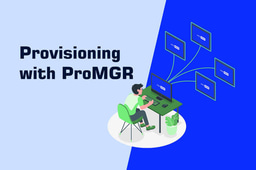Introduction to Mixed Reality (MR) and Extended Reality (XR)

In today’s rapidly evolving technological landscape, MR and XR are at the forefront of innovation, revolutionizing how we interact with both digital content and the physical world. These cutting-edge technologies represent significant leaps forward, creating immersive and interactive experiences that are transforming industries ranging from education to healthcare and from design to marketing.
Understanding Mixed Reality (MR)
Mixed Reality (MR) is a hybrid technology that combines elements of both the physical and digital worlds to create environments in which physical and digital objects can interact in real-time. This interaction occurs through advanced hardware and software that enable the overlay of digital information onto the real-world environment. MR is distinguished from Virtual Reality (VR) and Augmented Reality (AR) by its capacity to facilitate interaction between real and virtual entities, allowing users to engage with digital content as if it were an integral part of their real-world surroundings.
The applications of MR technology are vast and varied, with several industries reaping substantial benefits:
-
Training and Simulation: MR can create realistic training environments that simulate complex scenarios for industries such as healthcare, aviation and military. For example, medical professionals can practice surgical procedures in a risk-free setting, enhancing their skills without the dangers associated with real-life operations. Similarly, pilots can experience realistic flight simulations that prepare them for various emergency situations, ensuring they are well-equipped to handle real-world challenges.
-
Collaboration: In professional settings, MR facilitates remote collaboration among teams by enabling them to work within a shared virtual space. This capability enhances productivity and communication by allowing team members to visualize and interact with 3D models, documents and other resources in real-time, regardless of their physical location. As remote work becomes increasingly prevalent, MR tools are essential for fostering teamwork and maintaining engagement.
-
Product Design and Prototyping: Designers and engineers benefit from MR by being able to visualize and manipulate 3D models in a real-world context. This capability accelerates the development process, allowing for quick iterations and modifications before moving to physical prototyping. For instance, automotive engineers can visualize a new vehicle's design and ergonomics in a real-world setting, facilitating more informed decision-making during the design phase.
Exploring Extended Reality (XR) :
Extended Reality (XR) serves as an umbrella term encompassing Virtual Reality (VR), Augmented Reality (AR) and Mixed Reality (MR). XR aims to extend or transform our reality through technology, creating immersive experiences that enhance how we perceive and interact with our surroundings. By integrating digital elements into our physical environment, XR technologies provide users with richer, more engaging experiences.
Key applications of XR technology are evident across various sectors:
-
Education: XR can create immersive learning environments that make complex subjects more accessible and engaging for students. By leveraging XR tools, educators can develop interactive lessons that allow students to explore abstract concepts in a tangible manner. For example, a biology class could use AR to visualize cellular structures, enabling students to interact with 3D representations of cells, enhancing their understanding of the subject matter. Moreover, XR can facilitate remote learning by providing virtual classrooms where students can collaborate and learn together, irrespective of their physical locations.
-
Healthcare: The healthcare sector is rapidly adopting XR technologies for a variety of applications, including surgical simulations, patient education and therapeutic interventions. Surgical teams can use XR for preoperative planning, visualizing patient anatomy in 3D to enhance precision during procedures. Furthermore, patient education can be transformed through AR, allowing patients to visualize their treatment plans or medical conditions in a more relatable manner. XR is also being explored for therapeutic uses, such as exposure therapy for patients with anxiety disorders, creating controlled environments for them to confront their fears safely.
-
Retail and Marketing: Brands are increasingly utilizing XR to create interactive and engaging customer experiences. Virtual try-ons allow customers to visualize how clothing, accessories, or cosmetics will look on them before making a purchase, bridging the gap between online shopping and physical retail experiences. Additionally, immersive product demonstrations enable consumers to experience products in a virtual environment, enhancing their understanding of product features and benefits. This level of engagement not only drives sales but also builds stronger customer relationships by providing unique and personalized shopping experiences.
Driving Innovation in the AV Industry
Both MR and XR are at the forefront of driving innovation within the audiovisual (AV) industry. They offer new ways to interact with digital content and enhance user experiences across various fields. As these technologies mature, they are expected to become increasingly integrated into everyday applications, making them essential tools for professionals across industries.
The integration of MR and XR into AV setups is particularly impactful. For instance, event planners can use XR technologies to create immersive environments for conferences and exhibitions, providing attendees with engaging experiences that capture their attention. By overlaying digital content onto physical spaces, they can create interactive presentations that resonate more deeply with audiences.
Moreover, in the realm of entertainment, MR and XR are changing how we consume media. Filmmakers and game developers can leverage these technologies to create immersive storytelling experiences, blurring the lines between fiction and reality. Audiences can become active participants in the narratives, enhancing their emotional engagement and connection to the content.
Challenges and Future Directions
Despite their transformative potential, MR and XR technologies face several challenges that must be addressed to fully realize their benefits. Technical limitations, such as latency and resolution, can hinder user experiences, while the need for robust hardware and software solutions can pose barriers to widespread adoption.
Furthermore, concerns about user privacy and data security in XR environments must be carefully managed. As more data is collected through immersive experiences, ensuring that users' information is protected will be critical in building trust and promoting adoption.
The future of MR and XR appears promising, with ongoing advancements in hardware, software and user interface design. As technology continues to evolve, the possibilities for creating immersive, interactive experiences will expand, leading to even greater integration of MR and XR into our daily lives.
Conclusion
In summary, Mixed Reality (MR) and Extended Reality (XR) are revolutionizing how we interact with digital content and the physical world. With applications spanning training, collaboration, design, education, healthcare and retail, these technologies are poised to enhance user experiences and drive innovation across various fields. As MR and XR continue to evolve, they will undoubtedly play a pivotal role in shaping the future of technology and our interaction with it.
-
Xchange Advocates are recognized AV/IT industry thought leaders and influencers. We invite you to connect with them and follow their activity across the community as they offer valuable insights and expertise while advocating for and building awareness of the AV industry.








Please sign in or register for FREE
If you are a registered user on AVIXA Xchange, please sign in